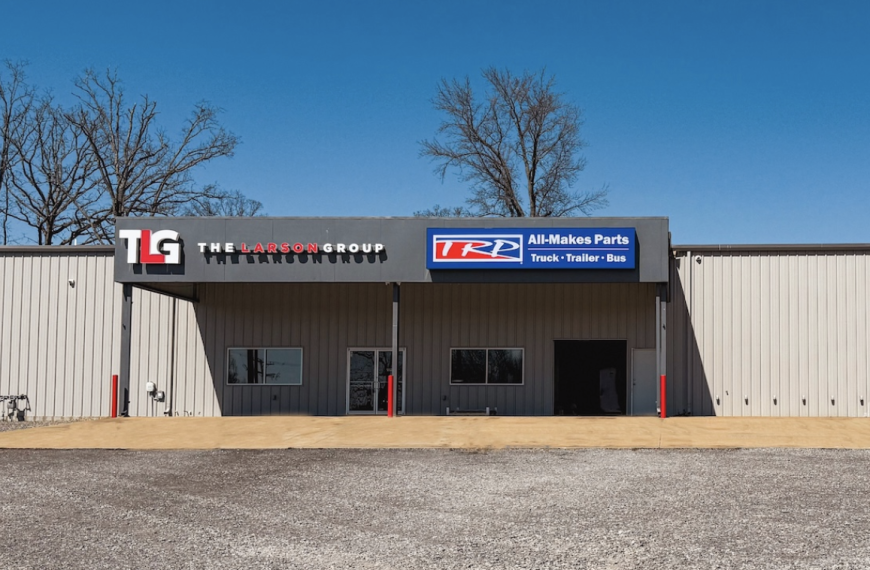Citing safety concerns, one of this country’s leading travel center operators has decided temporarily not respond to roadside breakdowns.
Travel Centers of America, which operates TA, Petro and TA Express, this week said it is looking at how to improve the safety of technicians making repairs alongside busy highways.
A statement issued by the company said, “We have paused Emergency Roadside Assistance (ERA) work on the highways until further notice. Roadside ERA will not resume until we have a better understanding of what improvements may be needed to support the safety of our employees. Our ERA teams are still responding to non-highway calls.”
A social media post making the rounds of trucking related accounts added, “During this time we will continue to provide services in parking lots, rest areas, and other non-highway or highway locations where it is safe for our team members to do so.”
Travel Centers of America provides a variety of truck service repairs and maintenance at 245 Truck Service locations. According to its website, TA Petro maintains its own 24-hour Emergency Roadside Assistance network of 600 roadside assistance trucks and more than 3,000 service technicians. It also relies on qualified third-party providers to respond to roadside repair requests.
Travel Centers of America is owned by BP Products of America, part of the London-based energy company formerly known as British Petroleum. bp finalized the purchase of TA Petro in 2023 for $1.3 billion.
At about the same time TA Petro made its decision to pause on-highway service responses, AAA issued new research that shows that many motorists are not observing laws which require them to slow down and move over when passing first responders and repair personnel working on the side of the highway.
When AAA researchers reviewed real-world footage of drivers passing roadside incidents, they found only 64% of vehicles either slowed down or moved over. The remaining 36% did neither. Changing lanes was far more common than reducing speed, suggesting that many drivers are missing half the law’s intent.
“Slow Down, Move Over laws exist to protect roadside heroes, first responders, and the stranded motorists who they serve. However, as these statistics demonstrate, drivers do not always follow the law, all too often resulting in preventable tragedies,” said Dr. David Yang, President and Executive Director of the AAA Foundation for Traffic Safety.
While every state and the District of Columbia has a “Slow Down, Move Over” law, many drivers don’t fully understand what those laws require. AAA’s national survey found two-thirds of drivers said they’ve heard of SDMO laws, but many couldn’t say whether their state has one or what the law entails. Drivers are far less likely to move over or slow down for tow trucks or stranded vehicles than for police, revealing a widespread misconception about who the laws protect.
The research reveals several troubling trends:
- Tow truck operators face the greatest risk. Only 58% of drivers witnessed in surveillance footage slowed down or moved over when a tow truck was stopped at the roadside, compared to 66% who slowed down or moved over for police vehicles.
- Intentions don’t match actions. Most drivers say they comply with SDMO laws, but roadside video shows otherwise—especially when it comes to reducing speed.
- Weak enforcement reduces deterrence. Drivers perceive little risk of being ticketed, and penalties vary widely—from $30 in Florida to $2,500 in Virginia.
AAA is encouraging policymakers, enforcement agencies, and safety partners to strengthen and align their approaches to “Slow Down, Move Over” laws—making them clearer, more consistent, and easier for drivers to follow.
AAA’s recommendations include:
- Clarify and align SDMO laws across states, including a consistent definition of what it means to “slow down.”
- Raise public awareness through emotionally compelling, visually clear campaigns that humanize the impact of noncompliance and showcase all vehicles covered by the laws.
- Increase enforcement visibility with coordinated, high-visibility efforts and education-first use of emerging technologies like dashcams and automated enforcement systems.
Last year, 46 emergency responders never made it home, according to the Emergency Responder Safety Institute. They were police officers, firefighters, EMTs, and tow truck operators—struck while assisting others on the roadside.
“Every responder working on the roadside deserves to make it home safely,” said AAA Director of Traffic Safety Advocacy and Research Jake Nelson. “We need clear, consistent laws, visible enforcement, and education that resonates with drivers. When everyone understands what ‘slow down, move over’ really means, we can make our roads safer for those who protect us every day.”








